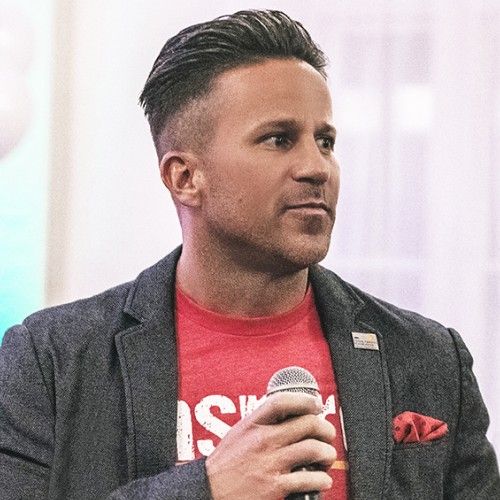A 360-degree assessment helps you understand your professional performance by having both you and your colleagues assess your abilities across several key skills.
The goal of a 360-degree assessment is to identify blind spots and vulnerabilities in your professional skillset. By getting feedback from your colleagues and comparing their perspectives to your self-assessment, you can get a deeper understanding of your work performance.
There are generally 3 outcomes from a 360-degree assessment: 1) somebody has underestimated their abilities, 2) somebody has overestimated their abilities, or 3) somebody is self-aware about their abilities.
This article is going to address some possible problems and solutions that might arise for people who have overestimated their abilities. This article is part of a series I’m writing about Ambition In Motion’s 360-Degree Assessments and how their results should be interpreted. There are ten other articles addressing the two other possible outcomes of a 360-Degree Assessment available here:
When somebody has overestimated their abilities, they are essentially giving themselves a greater score for whatever category is being measured compared to their colleagues’ scores of them.
At first glance, this can sting because you are essentially learning that your perception of yourself is greater than your colleagues' perception of you which may cause one to think “I must not be as good as I think I am” or “My colleagues must not realize all of the things I do to be strong in this area.”
For most people, the answer is somewhere in the middle.
When my team and I at Ambition In Motion facilitate mentorship programs, we also include a 360-Degree Assessment and report to each participant. We do this for two reasons: 1) these reports can help reveal opportunities for growth in one’s professional skill set, and 2) deep self-reflection is a major launching pad for fostering vulnerability in a mentor relationship. These two components are crucial to developing strong, valuable mentor relationships.
Next, I’ll explain the significance of each of these categories, and then suggest ways that someone can learn after finding out they are overestimating their abilities in each category. This should be an opportunity for growth and understanding, not a time to be defensive and stubborn.
People Management
People management abilities are extremely valuable, regardless of whether or not you are in a leadership position or have the title of manager. People management stretches across one’s ability to maintain positive relationships with those they work with, participate in organizational citizenship activities (e.g., supporting a colleague with their work), be open to constructive feedback, and show that you are always open to learning more.
If you gave yourself a greater score than colleagues on your people management abilities, there is clearly a gap. This could mean that either you are not as skilled as you believe, or that the people you work with don’t realize the effort you put into being a good people manager. The first step to reducing that gap is purposefully reflecting and trying to understand what is causing the gap.
Not as good as you believe you are
This can be a tough pill to swallow. You may not be as good of a people manager as you thought you were. If you gave yourself a moderate score and your colleagues gave you a lower score, this typically is a product of stagnation: sitting still means falling behind in the long run. You might not think highly of your people management ability, but in your perception, you do enough to get the work done but you aren’t that bad.
You gave yourself a moderate score
This is a fork in the road. One option is to accept being a bad/mediocre people manager, which means operating under the assumption that this skill is not crucial for your own career trajectory or happiness. This is a risky move! Humans are naturally social, whether we realize it or not, and poor people management abilities will have unforeseen costs. But if that’s how you decide, perhaps you can skip the rest of this segment.
On the other hand, if you want to grow your People Management abilities, then keep reading.
Being a strong people manager is all about being willing to help others and contribute positively to the workplace culture; we call this “Organizational Citizenship”. I like to refer to being a strong people manager as the Tim Duncan award. Tim Duncan is a retired professional basketball player who played for the San Antonio Spurs and won 5 NBA championships with them. Tim was consistently the best player on the floor, but he had a secret weapon. Tim’s playstyle was special because he deferred to his team and played to their strengths to amplify his team’s ability to win. Tim consistently ceded the spotlight to his teammates, even though he was the best player on his team for most of those championships. By helping build up those around him, even if it didn’t get him the stats, recognition, or pay that other superstars demand, he helped push his team towards victory.
Now, I don’t know Tim Duncan personally. But, I would imagine that his professional basketball career was very satisfying: 5 NBA Championship Rings speaks for itself. He also avoided drama with his contract or playtime or coach, and his teammates took notice. When the best player on the team cares so deeply about building up his teammates and avoiding the BS, the rest of the team follows his lead because they are invested in reaching their team’s potential.
If you are reading this, you are probably not a professional basketball player – most work environments don’t have a pinnacle moment that they work up to every year similar to a national championship. But, you do have a long “regular season”, even if your “championship” is only your annual review at the end of the year. And dominating your personal regular season can sometimes mean pulling your team together to avoid the drama and put in the hard work, game after game.
Everyone wants to work in an environment in which they feel happy, respected, and clear about what and why they do their work. You probably also want a work environment with other people that also feel happy, respected, and clear about what and why they do their work. Regardless of whether you have people management in your job description, working on improving your people management abilities will help keep you and your team thrive and become happier at work.
You gave yourself a high score
The other side of this people management coin is that you gave yourself a high score and your colleagues gave you a moderate or a low score.
This is typically a sign of a person who is well informed on what it means to be a strong people manager – e.g. you have read the books, maybe you have motivational quotes on your wall or posted on social media, maybe you’ve even written out what it means to be a good people manager.
You, theoretically, understand what it means to be a strong people manager, but in real life have not been able to effectively apply what you have learned.
Just to be abundantly clear, this is on YOU. Sure, you can find some mitigating factors or excuses, but in the end, good People Management will mean adapting to your environment. It’s not your team’s fault that your methods for being a strong people manager haven’t been impactful to them. It is up to you to listen to feedback, reflect on it, and then try something different to be better. And if you have tried multiple times to be a better people manager and it still isn’t working, it means you haven’t tried enough things. It took Thomas Edison 1,000 attempts to invent the light bulb. If you have studied people management tactics AND you have tried 1,000 different ways to be a better people manager but still are having trouble, you are probably just extremely unlucky. But just like in so many other parts of life, take some comfort in knowing that all you need to do is keep learning and trying new things.
Keep in mind that people management is an ever-evolving process. In the 1980s, Jack Welch of General Electric slashed the bottom 10% of earners every year at the company, and at the time people lauded him for it. Now, GE’s stock is all over the place and a cutthroat culture ensued because nobody felt safe. The point is that what is considered a strong people management strategy now may not be considered a strong people management strategy in the future. Keep an open mind for the innovation in People Management.
Strategies to improve your people management
To begin, always ask for feedback. Performance reviews shouldn’t be some annual tradition; gathering feedback is the crucial final step when somebody has tried something new at work and they need to know if it was effective. And reviews shouldn’t just be between the manager and direct report. Anyone who is affected by your work should have their feedback incorporated when you seek to make improvements.
Being a strong people manager is about your ability to help others do their best work. Put another way, how can you be the best Robin to their Batman? If you can think of yourself as the sidekick to help those you work with be the hero in their own story, you will make incredible strides at being a better people manager.
Therefore, the first step is understanding where those you are working with would like to go. Have you ever helped someone and then felt that they weren’t grateful for your help? Oftentimes it is because what you thought would be helpful to them wasn’t what they needed. You assumed that going out of your way to perform some task would be what they were looking for, but you skipped past communicating and stepped on their toes. This might be because they wanted to experience doing the task themselves and your help seemed more like you didn’t trust them. Or, it could be because your assumption about what they want is incorrect, so by jumping in and taking over, you were really just forcing your personal style onto their own decisions.
So, the best thing for being a better people manager is asking those you are working with what their biggest challenges are and finding the clarifying details that will help you truly understand the issue. Without that information, you can’t start the next step: working collaboratively to find new ideas to support them and ensuring achieving these new outcomes will work for the people involved.
Notice how I didn’t write “performing these new tasks” but instead wrote “achieving these new outcomes”. This is critical to distinguish because you completing random tasks is not enough to be considered a strong people manager. You have to help the people achieve the outcomes that you all have agreed are important. If I lose my dog and you say that you will help me find my dog, I will be grateful if you help search but my pain is not alleviated until my dog is found.
Thus, commit to clear, achievable outcomes that directly support your colleagues and ensure that achieving those specific outcomes will be, in fact, helpful.
Once you achieve that outcome, ask for feedback on how that outcome helped them with their work and how it made them more efficient or effective at work.
This may seem like a lot, but this is the type of work that is necessary to be a truly impactful and strong people manager.
In essence, overestimating your abilities in these categories does not mean that you will forever be this way, but it does mean that there are opportunities for growth that you must tap into if you would like to improve.




































































